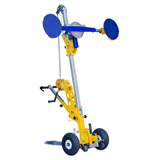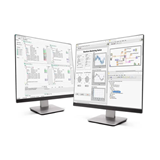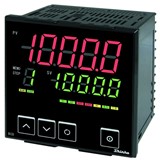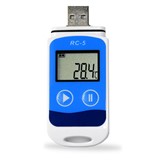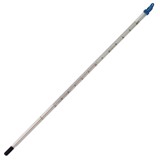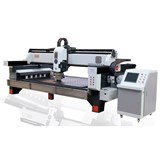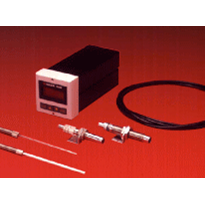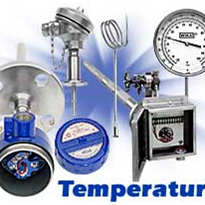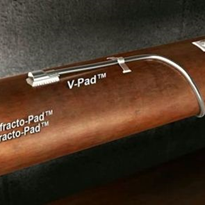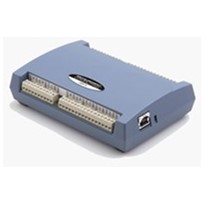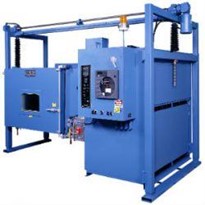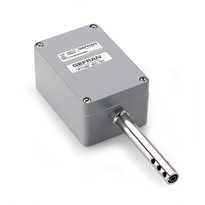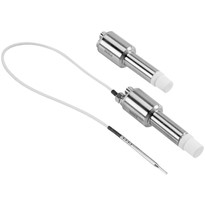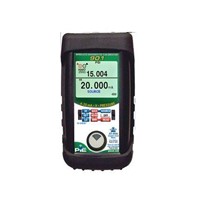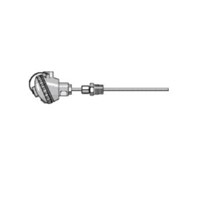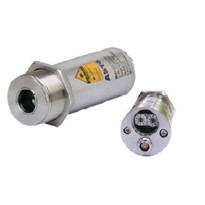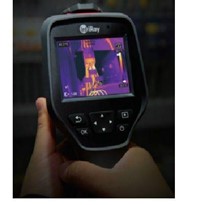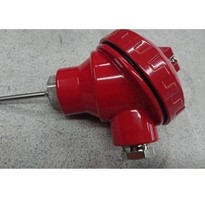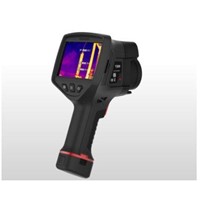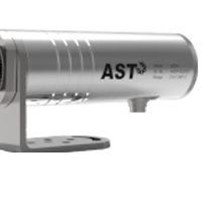Temperature measurement helps by improving the efficiency of glass plants by maintaining homogeneous quality and reduce scrap of the glass product. For efficient process control, temperature measurement is done during the various production stages in the manufacturing of float glass, container glass and fibre glass variants. Infrared Pyrometers are useful to assist in this process of controlling temperature.
What is an Infrared Pyrometer?
An Infrared Pyrometer is a type of remote-sensing thermometer used to measure the temperature of distant objects. Various forms of pyrometers have historically existed. In the modern usage, it is a device that from a distance determines the temperature of a surface from the amount of the thermal radiation it emits, a process known as pyrometry and sometimes radiometry.
A Pyrometer consists of an optical system and detector. The optical system focuses the energy emitted by product being tested onto the detector, which is reactive to the radiation. The output of the detector is corresponding to the amount of energy radiated by the tested product, and the response of the detector to the specific radiation wavelengths. This output can deduce the objects temperature. The emittance, of the object is an important variable in converting the detector output into an accurate temperature signal. The physics behind the broadcasting is known as Planck’s Law of Thermal Radiation. The IR range falls between the visible portion of the spectrum and radio waves. IR wavelengths are usually expressed in microns, with the IR spectrum extending from 0.7 to 1000 microns. Only the 0.7-14-micron band is used for IR temperature measurement.
What are the Advantages of using Infrared Pyrometers in The Glass Industry?
- Remote Temperature measurement without physical contact
- Infrared Pyrometers are available for different spectral ranges and are made particularly by keeping the application in mind.
- Digital and Robust features with compact electronic components.
- Minimum or no maintenance of infrared pyrometers as they do not undergo wear and tear due to harsh environment and high temperatures.
- Very fast response time within milliseconds.
- Easy to operate and handle.
- Economic and delivers more than the cost.
- Measurement of wide variety and high temperature ranges.
- High accuracy.
- Remote mounting possible from the hot target.
- Temperature of moving targets can be easily determined.
- Useful in hazardous or inaccessible areas.
- No effect of electromagnetic field on the infrared pyrometer.
- Don’t contaminate, damage, or interfere with the process.
Why is the Role of Wavelength or Spectral Range important in the Selection of an Infrared Pyrometer?
The right wavelength selection is very important for all glass applications.
- Glass is transparent in the visible and near wavelengths of infrared region. In spectral range of 5…5.14 μm emissions are very high with almost zero reflections which is very useful as temperature of the glass surface can be measured reliably and accurately. The infrared pyrometer AST AL514 works in this spectral range and is used particularly for the float glass temperature measurement.
- At 8-14 μm glass is completely opaque and there is no light penetration at all, but reflection is around 20% so we may use 8-14 μm range with emissivity settings as E = 0.8 when the reflectivity is 0.2. This spectral range is useful for temperature measurement of bottles and thin glass sheets. But if the surrounding contains flames and hot objects it can interfere with the reading of the pyrometer in the spectral range.
- Spectral range 1 μm…is recommended for the molten glass temperature measurement as the light penetrates certain centimetre below and this helps to measure the glass temperature slightly beneath the surface in the Melting Tank, Forehearth and Feeder.
The following table summaries the glass application and our recommended products for the same.
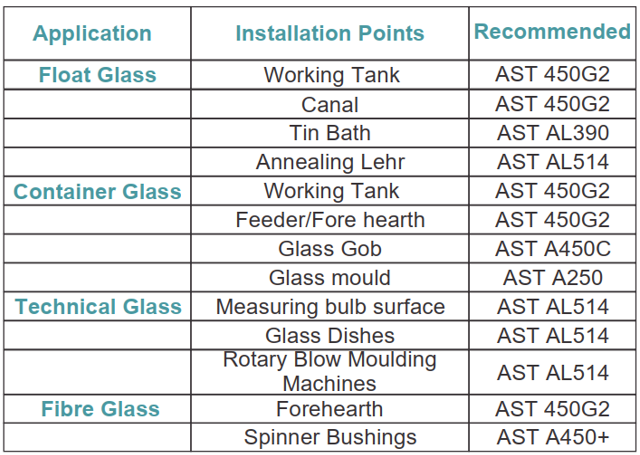
What is Float Glass Application?
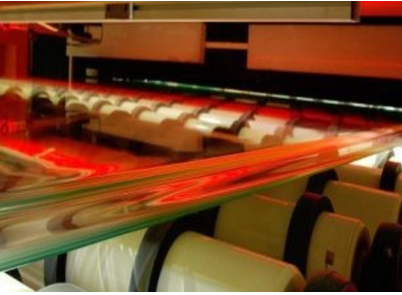 The raw materials are fed into the furnace where it is melted at a temperature of around 1500°C. The molten glass is then transported to the Tin bath through a canal. The glass floats on the tin surface like a ribbon .As the glass flows through the Tin bath its temperature drops from 1100°C till 600°C.
The raw materials are fed into the furnace where it is melted at a temperature of around 1500°C. The molten glass is then transported to the Tin bath through a canal. The glass floats on the tin surface like a ribbon .As the glass flows through the Tin bath its temperature drops from 1100°C till 600°C.
Once the glass passes out of the Tin bath it passes into the Annealing Lehr where it is subjected to cooling so that glass becomes resistant to strain, doesn’t crack and most importantly cut ability of the glass will be good .Once the glass is properly annealed it exits the Lehr and then the
glass is cut by machines and transported. The regions within the float glass manufacturing process
where temperature measurement is crucial are Working tank, Canal, Tin bath and Annealing Lehr.
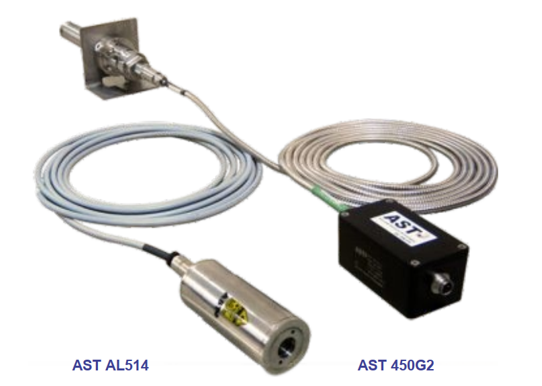 Application: Working Tank
Application: Working Tank
Process temperature: 1500°C
Recommended Pyrometer: AST 450 G2- Application: Canal
Process Temperature: The temperature must be
minimum 1100°C before entering the Bath.
Recommended Pyrometer: AST 450 G2 - Application: Tin Bath
Process Temperature: starting at 1,100°C and leaving
the float bath as a solid ribbon at 600°C. As the glass
flows down the tin bath temperature reduces to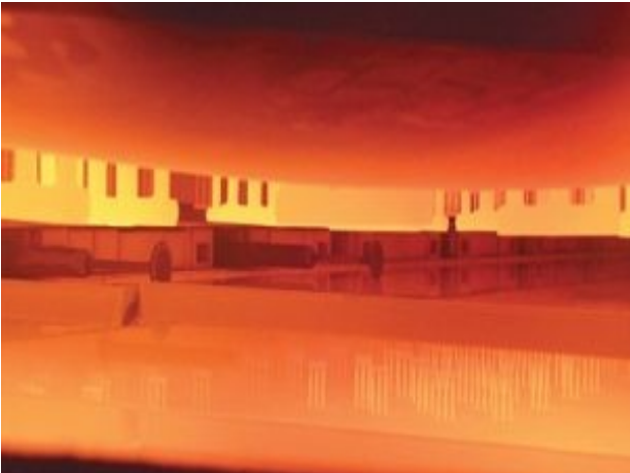 600°C
600°C
Installation of the Infrared Pyrometer: AST Infrared
sensors should be mounted above the Tin bath
Recommended Infrared Pyrometer: AST AL390 - Application: Annealing Lehr
Process Temperature: 100°C-800°C
Installation of the Infrared Pyrometer: AST Infrared
sensors will be mounted at the top across the Lehr at
equal locations.
Recommended Infrared Pyrometer: AST AL514

What is Container Glass Application?
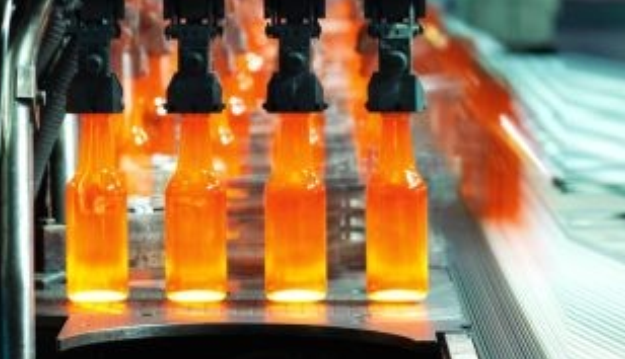 The glass containers such as bottles, jars, and bowls etc are the various products manufactured in this process. It involves the transfer of molten glass from the working tank to one or more for
The glass containers such as bottles, jars, and bowls etc are the various products manufactured in this process. It involves the transfer of molten glass from the working tank to one or more for
hearths/feeders. The molten glass then flows into the gob from where it is dropped into the various moulds where the glass forming is done. The most important and critical region is the Forehearth /Feeder. Proper temperature is to be maintained in the Fore hearth. By doing so it can be ensured that the molten glass reaching the gob is in homogeneous state. As we know change in temperature is critical to glass viscosity. A slight change leads to changes in viscosity as well.
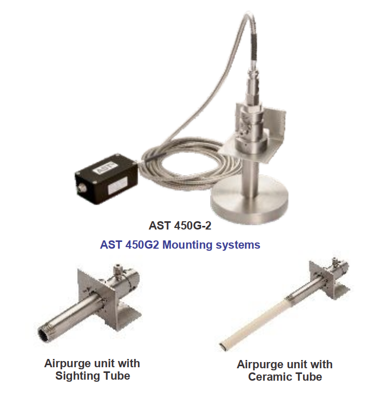 Application: Working Tank
Application: Working Tank
Recommended Product: AST 450G2
Temperature measurement is crucial for maintaining homogeneous condition of the molten glass exiting the tank.
Application: Feeder / Forehearth
Recommended Product: AST 450G2
The AST 450G2 is the right solution for the monitoring of temperature in the Fore hearth. The fast response time is useful in monitoring changes in temperature range.
Pyrometer contains small optical head which makes it easier to reach the harsh locations and the Fibre Optic Cable can withstand ambient temperature up to 250°C very easily. The accessory such as air purge unit helps in purging and keeps the optical lens clean, and the mounting system provides
proper support to the pyrometer.
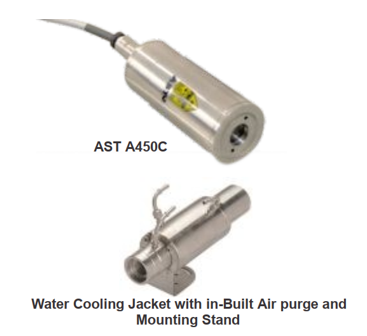 Application: Glass Gob
Application: Glass Gob
Recommended Product: AST A450C
Efficient temperature control helps in achieving the desired container wall thickness. With the use of infrared pyrometer, the correct gob temperature is achieved before entering the next stage. This application demand fast acting infrared pyrometers. The two-colour pyrometer provides a response
time of 20msec. Pyrometer with water cooling jacket is recommended for this application.
Application: Glass Mould
Recommended Product: AST A250 single wave infrared non-contact on-line digital pyrometer with peak hold and software for continuous data storage and available small spot sizes.
Pyrosales has extensive knowledge and experience in temperature management and process control. We provide advice, design, repair, and fabrication to our clients on a wide range of industries, uses, and capabilities of temperature management.




